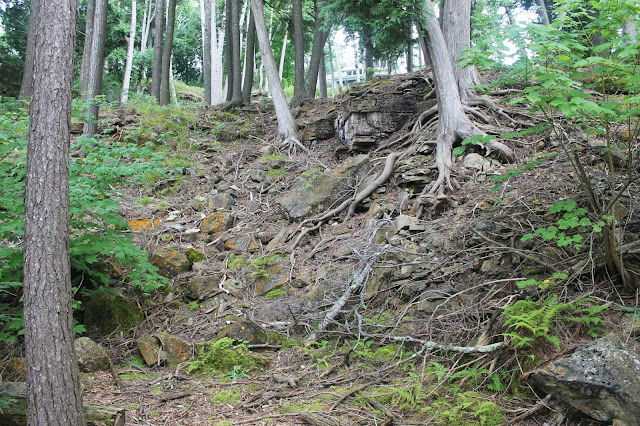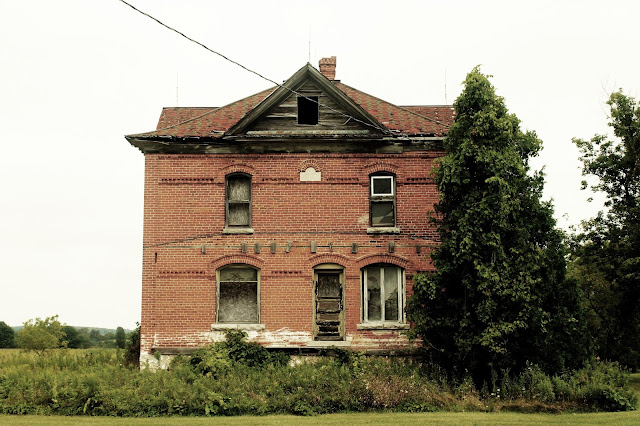When most people think about the Chicago River, they envision a picturesque stream of water that cuts through downtown Chicago, providing framing for many of the city's skyscrapers. Many think about how important the river is/was for commerce and industry. Few would consider the river to a safe place to swim and play in, since it has a bad reputation for being filthy. Though you'll see kayaks on the river downtown, you probably won't see paddlers splashing that water on their bodies for relief from the sun. In fact, effluence from all types of sources empties into the river, including raw sewage during heavy storms, since Chicago's combined sewer system cannot handle runoff the way other large cities do. So, though cleaner than it was a century ago, much of the river isn't what I'd consider to be anything more than a thoroughfare for boats.
Upstream on the North Branch, before the river enters the highly-developed cityscape, much of it is wrapped in forest preserve. Part of the reason for this is because the river has a wide floodplain (for a small river) and building close to the river would be disastrous. The northern section of the North Branch hasn't been engineered, channelized, or altered nearly to the the extent that the southern portion has. You can still view the river from the forest preserves and plan on seeing various birds, mammals, herps, and aquatic animals you wouldn't see downtown. Don't get me wrong - you won't feel like you're in Shangri-La. There are still huge issues, including erosion, sediment pollution, contaminants, invasive species. The number of species found is nothing compared to what you'd have found pre-European settlement. In particular, most of the mussel, fish, plant, and bird species are gone. However, there's enough decent-quality habitat to support a selection of hardy generalists. Herps are represented better than many would think, considering the overall quality of habitat.
On August 2nd, I spent about two hours walking along the North Branch of the Chicago River within a forest preserve, counting the number of herp species I found. In that time, I found six species - all known to occur in disturbed areas, but also indicators that things aren't THAT bad.
First, I saw this great blue heron (Ardea herodias) poking and prodding for aquatic animals upon which it dines.
I saw something big stirring around near the bank, and quickly realized it was a big common snapping turtle (Chelydra serpentina). I slowly inched my way onto a big downed tree along the bank of the river to get a better shot, but just as I got situated, the turtle slowly lost interest in patrolling the area, turned, and disappeared into the deeper, darker waters of the river.

Interestingly enough, neither me nor anyone I know have ever seen painted turtles (Chrysemys picta) in this particular stretch of the river. Earlier this year, friend and naturalist Jeff Skrentny photographed a common map turtle (Graptemys geographica) here - the first account I've ever heard of one in the area. What we do see, in addition to snappers, are red-eared sliders (Trachemys scripta). Though these are native to parts of southern and central Illinois, it is unclear whether or not they make their way up to the Chicago area naturally via rivers and tributaries, or if the ones here are all escaped pets or descendants of those escapees. Certainly, many of the sliders ARE in fact escaped pets - red-eared sliders are by and large the most commonly-kept (and released) pet turtle in the United States (and possibly the world). The question is, have the turtles managed to reach the region naturally in small numbers, validating their status as naturally-occurring? Since this red-eared slider allowed me to get fairly close before she plopped into the water, I'd have to guess this was once someone's pet.

Maybe the biggest surprise were the northern leopard frogs (Lithobates pipiens) present along the river in wet areas full of tall grasses. As a young kid, I explored these same forest preserves, and never saw leopard frogs. I believe that habitat restoration has helped these frogs a lot. Areas once choked with buckthorn have been cleared and now, the sunlight reaches the woodland floor, where stands of tall grasses grow in wet, marshy areas along the river. A stroll on the path next to these grasses will result in leopard frogs leaping about everywhere. I tried to catch a few, but they were too fast. Luckily, I later found this one, sitting right on the bank of the river. I was able to kneel down, get a few shots, and get up without alarming the frog.
Not really surprising was a sighting of a muskrat (Ondatra zibethicus).
I usually find brown snakes (Storeria dekayi) in more open areas, but this one was actually under a dense canopy, in the dark under a log.
I saw another big snapper and tried to redeem myself, but again, this one had no interest in paparazzi and turned and walked away.
American toad (Anaxyrus americanus) - a classic.
I'm not a skilled birder but I think this is a cedar waxwing (Bombycilla cedrorum).
Finally, to top off the walk, were two big, fat bullfrogs (Lithobates catesbeiana) sitting squat in the muddy substrate of the river. These also let me get pretty close for photos; one did eventually dive for cover, but this one was more tolerant. Note the water strider photobomb. These frogs need permanent water to breed in since their tadpoles take two years or more to metamorphose into the adult form. The only such body of water in the area is the river itself - a slough in the same preserve typically dries out by mid-summer. The slough holds water long enough to support the toads and leopard frogs most years, but is insufficient for reproducing bullfrogs.

































